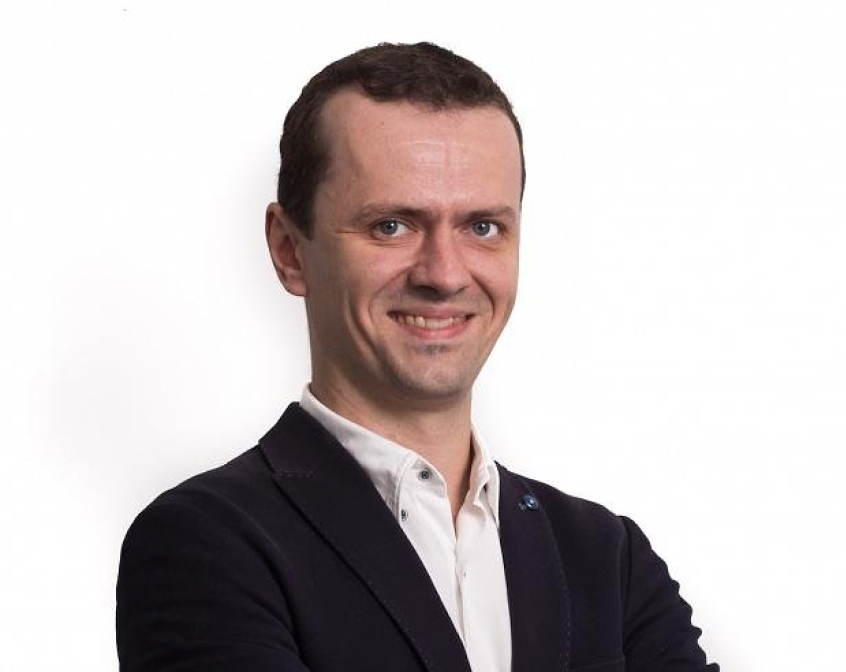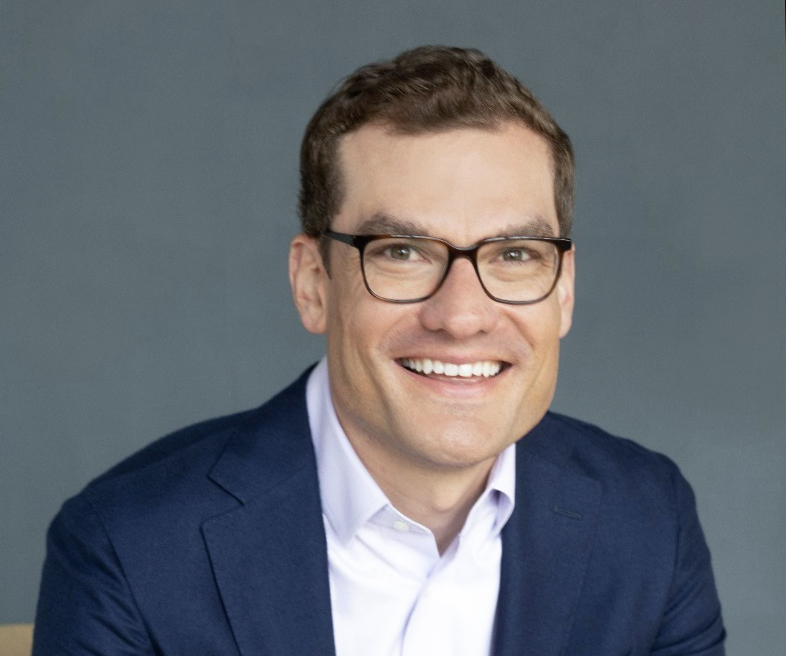In our most recent discussion in our ongoing interview series, we had the pleasure to speak to Sasha Reminnyi. Sasha is the former CEO of StepShot, a provider of process documentation software that was acquired by UiPath in 2019.
Sasha is an entrepreneur, operator, startup adviser, and academic. He is based in Ukraine, from where he spoke to us virtually about the evolution of the country’s startup ecosystem, his own career trajectory, and what it was like building a company into a successful acquisition.
Interview
Sasha, thank you for joining us and being open to sharing your story and advice with our readers. Ukraine, your homeland, is of course the center of global attention this year. What has been your experience in founding and leading a startup there over the last decade?
In the early 2010s Ukraine’s start-up ecosystem and the market were beginning to expand. We had a few local acceleration programs that could provide knowledge, and we could test the hypothesis and then scale up significantly. Some of them, which started in 2012-2013, closed due to the instability of the local market around 2014.
Signs of the Ukrainian invasion also appeared in 2014, but at that time, many of us didn’t understand it, and it was perceived by most people as background noise that was somewhere far from us, especially on the Western side. Since then, the ecosystem continued to evolve and became much more resilient by the end of 2021.
When the bigger invasion started earlier this year, everybody was worried about safety, about the essentials, and we hit the pause button. But none of the startups closed. Having exposure to the international markets, venture capital, and angel investments, they continued working and picked up the pace after several months.
What this tells us is that the Ukrainian internal ecosystem evolved a lot in recent years and right now we have human capital and venture capital, and many issues to work on. So this just makes us more resilient, and more creative. I also see that people’s attitude towards risk has changed – we are more willing to take risks. A lot of businesses started looking for customers abroad, and expanding internationally, while before they were more local.
On top of this, Covid19 has given us a crash course on how to work in disconnected environments. If you were able to sell during that time, you should be able to sell now under any condition. Even given the current circumstances, with martial law in full effect, there is the possibility to travel abroad as a representative of a company if you have permission from the Ministry of Digital Transformation. For example, last week we had 10 Ukrainian startups visiting San Francisco for TechCrunch Disrupt. For me, being able to still feel safe enough and being allowed to work on your ideas, while unfortunately, the Eastern part is being bombarded, is amazing.
Wow, the resilience of the startup ecosystem there is amazing. That’s a fascinating point about how Covid19’s injected a degree of anti-fragility into certain parts of society, ultimately making it stronger in the long run. Taking a step back though, you’re both an academic with a doctorate degree as well as an entrepreneur. You’ve had a successful exit and now also serve as a startup adviser in the Ukrainian ecosystem. Tell us more about how you got here, your background.
The best way to learn something that brings you the right skills in life is to start working as early as possible. I started working in IT during my 2nd year at university. After I graduated, I was invited to apply for postgraduate education, and I got used to handling a full-time job and all the university work at the same time, as well as freelancing.
One of my early freelance contracts was around an application that allowed you to document workflows step-by-step. The scope of this tool was to allow capture of all the mouse clicks and convert them into screenshots with highlights where you clicked and retranslate the story. It took me about two months. I got excited about the potential of this and I suggested keeping the IP on the product and selling a license to the person who hired me for the gig. In another couple of months, I developed a whole solution based on it and launched the first version of the product.
Unfortunately, at that time, there was practically no possibility of learning how to expand the business, how to market and sell it. Step by step, I started learning from my inner circle, a friend of a friend who introduced me to someone else, and in a few years, I grew it to a small side hustle that was bringing in about $20,000 per year. This is how StepShot started, while at the same time I was growing my IT career, from an individual contributor as a developer to being a team lead, software architect, and consultant.
In 2015, I applied to an acceleration program in Estonia, and StepShot was among the first in the region to go through such a program and show good results, which brought more traction and partnerships like the one with ServiceNow. At the same time, I was growing the team and learning everything by doing.
What lessons learned can you share from those early days?
Something that stuck with me is that growing the team doesn’t mean that the product is growing as well – it doesn’t convert 1:1. I remember that at some point, we fixed our team size at around 20 people, and I put a full stop on hiring, as we had all we needed within the skillset of our team members, and if we wanted to understand something specific we approached consultants. That was the turning point when we started digging deeper into what we can do in narrower verticals, looking for partnerships, and looking into the robotic process automation (RPA) space and I found out about UiPath and the similarities between the products and the complementarity of both.
StepShot was the first company UiPath acquired, was it an intentional move on your part to sell the company?
Not really. I knew I wanted to do some kind of partnership with UiPath, we already had integrations for our product with the other leading players in the RPA market; Automation Anywhere, and Blue Prism. There is actually a funny story about how everything began.
During the summer of 2018, my wife decided to go to London for a personal matter, and I badly wanted to accompany her, but I needed to find a business reason for the trip since my visa had expired. I decided to participate in the UiPath Together Event in London, I purchased a ticket, and during the event, I met Daniel Dines, I spoke with people working in different UiPath departments, and then Daniel asked me to send him more information about StepShot. In March 2019, they invited me to New York to showcase all of our work to the senior tech leadership in UiPath. Everybody was excited, they liked the product and my leadership skills, and while we were out at a restaurant, they said to me they want a deeper partnership, a marriage between UiPath and StepShot.
What a proposal! What made you say yes?
It was a tricky, but good situation to be in. On the one hand, I wanted to show others in Ukraine that it is possible, and on the other, I wanted quicker results. Although Stepshot was doing well and had continued growth opportunities ahead, this was a compelling offer. So I accepted the marriage proposal.
It must have been so exciting at the time. But also a bit nerve-wracking I’d imagine. How did you prepare your team for what was about to happen?
I would say I could have done a better job on this and probably the next time, I would do some things differently.
We built a comfortable and secure environment for the team, we would hang out together, and everybody felt like a part of the family. I knew exactly the level of every person, we hired a lot of smart juniors, as we didn’t have that much senior talent within the city, and then we taught them within our premises.
Moving our team into a larger company meant that aspects of our team dynamics, culture, KPIs, and plenty of other things related to how we did business, would inevitably change. Preparing our team for those changes, and what they would be, would have been something I could have done better.
Ultimately, our team understood that bringing UiPath to Ukraine would mean additional opportunities to learn and grow. Plus, having our product inside of a company as big as UiPath meant that more people would benefit from using it. The growth opportunities that come along with working at a big tech company like UiPath probably would not have been available in Lviv. All of our team members grew significantly in the years since, have done amazing work as part of the larger UiPath organization, and I am proud of them.
With the benefit of hindsight and the wisdom that’s come along with it, what is your advice to other founders on how to prepare before acquisition, while at the same time laying the groundwork for what is going to happen afterward?
If you are building a company for the sake of building a company, and you get approached by a potential acquirer, then you should consider the terms as they’re offered to you. You don’t need to be over-prepared in terms of having a strong opinion on how you want every single aspect of the acquisition and integration to take place. That said, I believe that together with the company that is making the acquisition offer, you can figure out the best way to integrate the two companies, as the negotiation process unfolds.
However, if you are building a company with the intent of selling it one day to an acquirer, you should be prepared to negotiate the terms that are most important to you. Everything from acquisition price, to integration processes, to what the two companies will look like post-integration.
Of course in either case, you should still be prepared for what you are going to do after the two companies merge. So I would highly recommend thinking about all scenarios and discussing them openly with the acquiring company. This was an important part of our integration with UiPath, so I would say the lesson is that the more you prepare and plan for how the integration will take place, the more you can ensure a smooth integration post-acquisition.
What were some of the things you think you got right during the acquisition process?
What helped us surpass all the little bumps, is that we faced everything with openness and without arrogance. All the people involved in the process genuinely wanted to do the best they could. Tolerance, patience, and embracing change as much as possible. While understanding that you are joining a bigger organization and you will have to adapt. Seeing the bigger picture really helped.
Switching from being a CEO hat to being a smaller player in a larger company is not an easy thing to do. How did you fit into the new role and what were the main changes you have noticed?
It wasn’t easy to adjust at first. However, after some time you get used to it and start seeing the advantages. On the one side, yes, I wasn’t anymore the decision maker for everything that happened within the team, and the product, but on the other side, this also came as a relief after I saw how well our team was accommodated at UiPath. They were thriving.
This meant I could focus not just on my work, but on my personal life as well. Being a founder or a CEO has its advantages and brings you fulfillment, but it also brings a lot of responsibility. Plus, once I became an employee at UiPath, I started having more predictability in my life, which came with a sense of stability, so I would say it is nice to have that from time to time.
This has been awesome Sasha, thank you for spending the time with us. Do you have any final words of advice for our readers who might be thinking about selling their business to a strategic acquirer, or who might be employees at a business undergoing an acquisition?
I think collaboration is key. The acquirer and acquiree should recognize that change happens fast. Embrace it, don’t resist it, and find the best way forward for the two companies.
Related Articles

Marius Istrate: Building an Employer Brand at Early Stage Companies

Gustaf Ericson: India’s Growing Software-as-a-Service Industry
n this interview with Crew Capital’s Dylan Reider and Sonia Damian, Gustaf (Gus) Ericson, associate partner with Bain & Co’s Financial…

Legal Mind, Security Leader: How Bradley Schaufenbuel’s Dual Expertise is Transforming the $150B Cybersecurity Industry
In our recent conversation, Bradley Schaufenbuel shared his insights on building effective security teams, driving innovation in application security, and…








